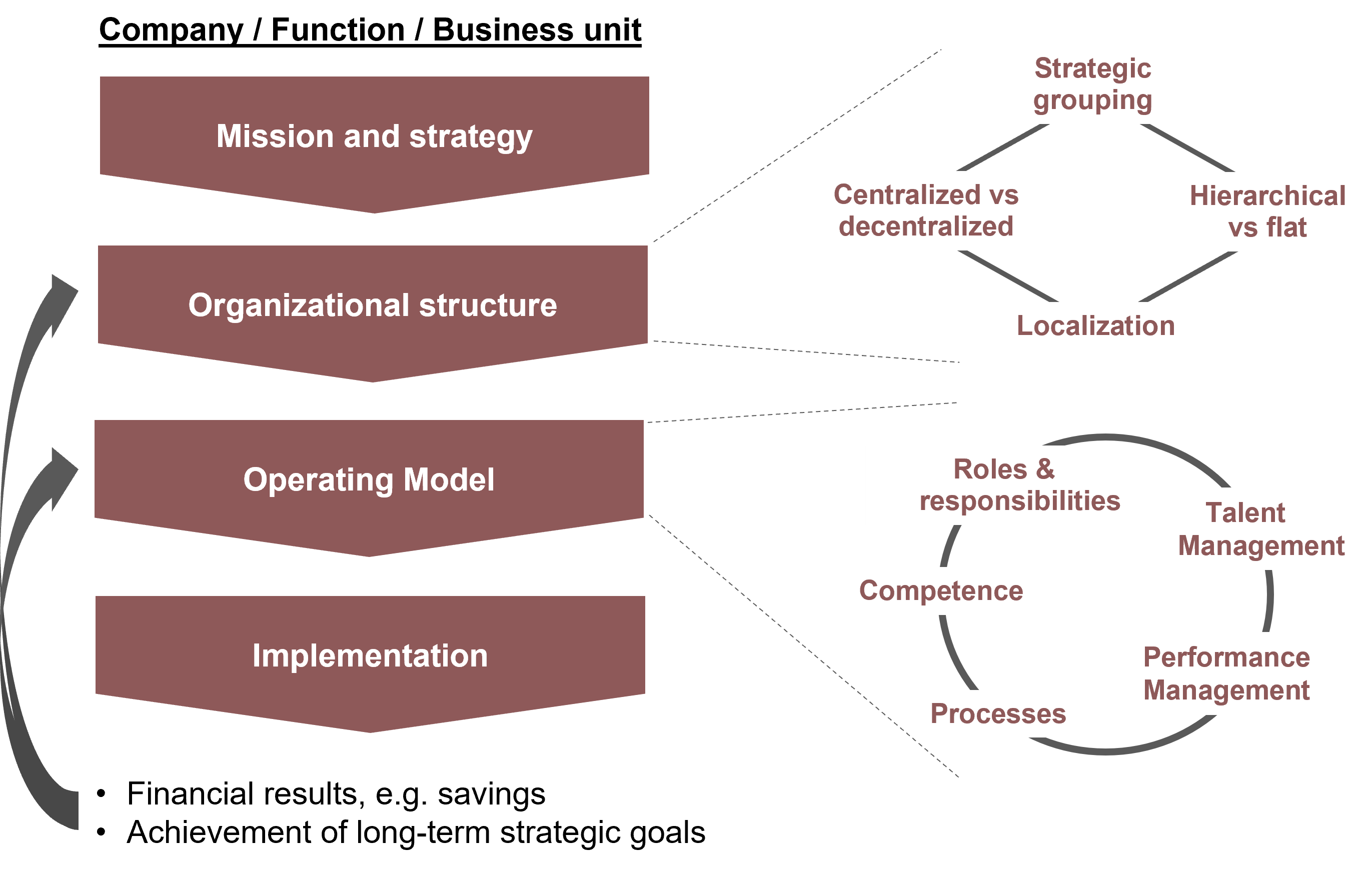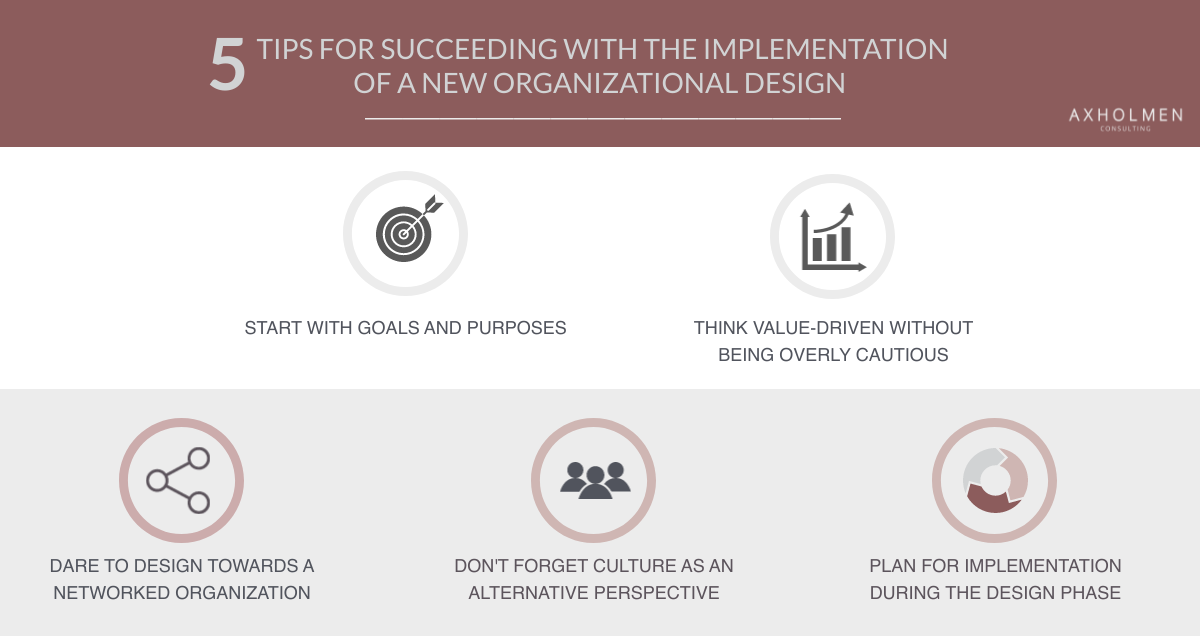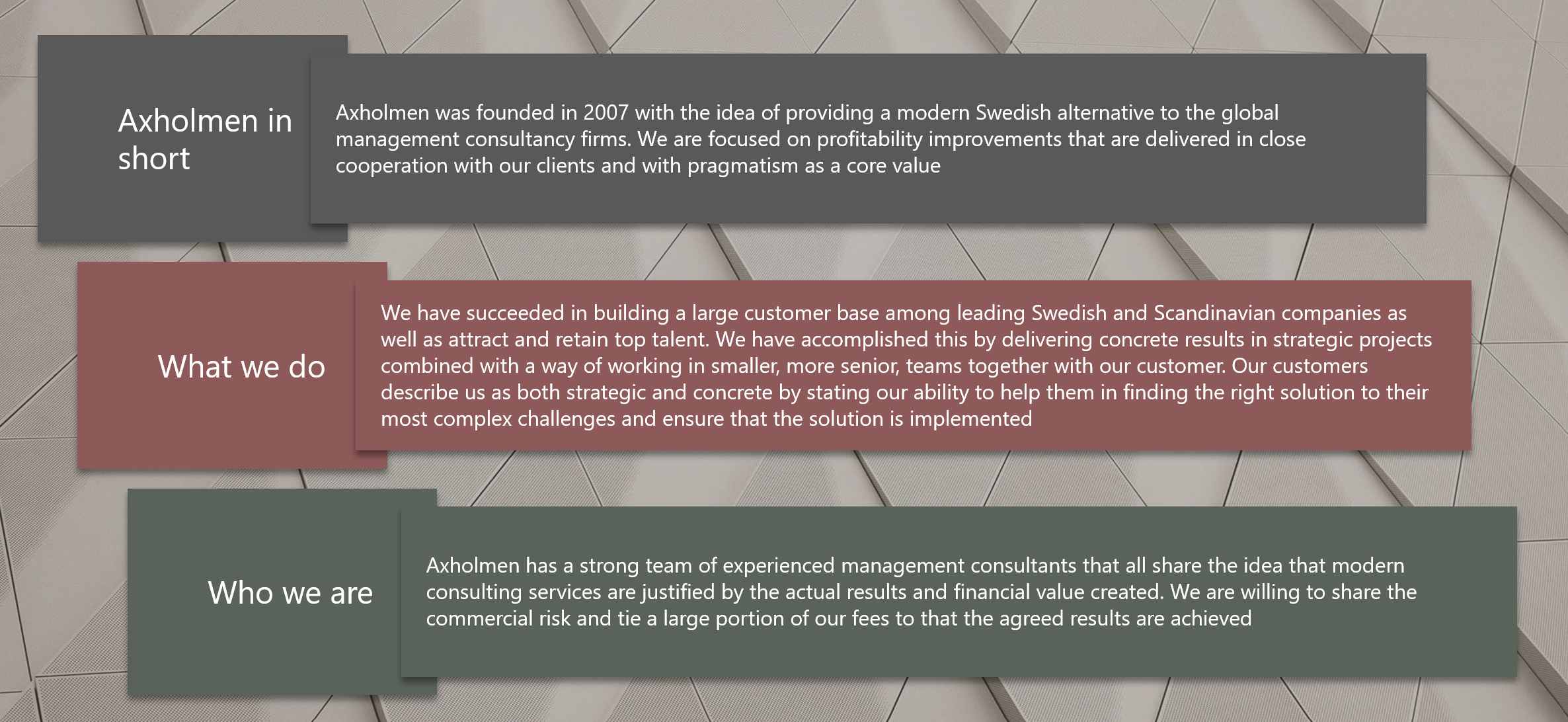1. START WITH GOALS AND PURPOSES
Reorganizations are often used as a kind of universal solution. Given that the majority fails, it is important to think beforehand. To begin with, as with any change, there should be a clear goal with a new organizational design (see the chapter above). However, there should also be indications that the current organizational design contributes to the goal not being achievable. For example, a decentralized purchasing organization that achieves widely differing results in price negotiations.
2. VALUE-DRIVEN WITHOUT BACKING DOWN
A reorganization always causes increased costs and uncertainty in the organization. Therefore, ask yourself which type of change creates the most value in relation to effort. Figure 1 illustrates different parts of an organizational design, where each part is not necessarily relevant in every situation. In some cases, desired goals can be achieved by clarifying areas of responsibility and having good metrics in place, rather than introducing a matrix organization.

However, focusing on value is not the same as being overly cautious. The experience of, for example, cost efficiency is that doing small adjustments can create as much concern as a real organizational change, without leading to desired results.
3. TREND TOWARDS LATERAL NETWORKS
In the last 20 years, the companies’ environment has changed towards being characterized by rapid technology development and global competition. Life cycles have been compressed, the map for intellectual property rights has been redrawn and ownership requirements have become multidimensional. Organizational design has thus begun to move beyond traditional vertical hierarchies, towards mobile workgroup structures, and networks outside the company’s boundaries. A clear indicator is that project organizations are beginning to integrate as a natural part of otherwise hierarchical organizations. The companies that dare to design towards a network organization, ready to face an ever-changing world, will have a competitive advantage.
4. CULTURE AS AN ALTERNATIVE PERSPECTIVE
The more loose the organizational structure needs to be, to meet constant change, the more focus needs to be placed on the corporate culture as a complementary control mechanism. Corporate culture does not exclude structure but is based on underlying values and attitudes (see Figure 2).

A good and well-known example of a successful journey towards value-driven culture is Netflix. Search for “How Netflix Reinvented HR” on YouTube for an interesting reading.
5. DESIGN BEYOND BOXES AND PAPERS
Finally, it must be mentioned that if the implementation fails it does not matter how good the organizational design is. A change in people’s place of residence and place at work is one of the most difficult types of changes. This subject should be an article itself, but we emphasize the importance of taking this into account already during the design phase. For example:
- Is it clear that the current organization is not sustainable/desirable?
- How should we measure success and progress with the reorganization?
- How do we create early ownership and mandate for key personnel?










